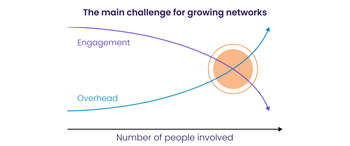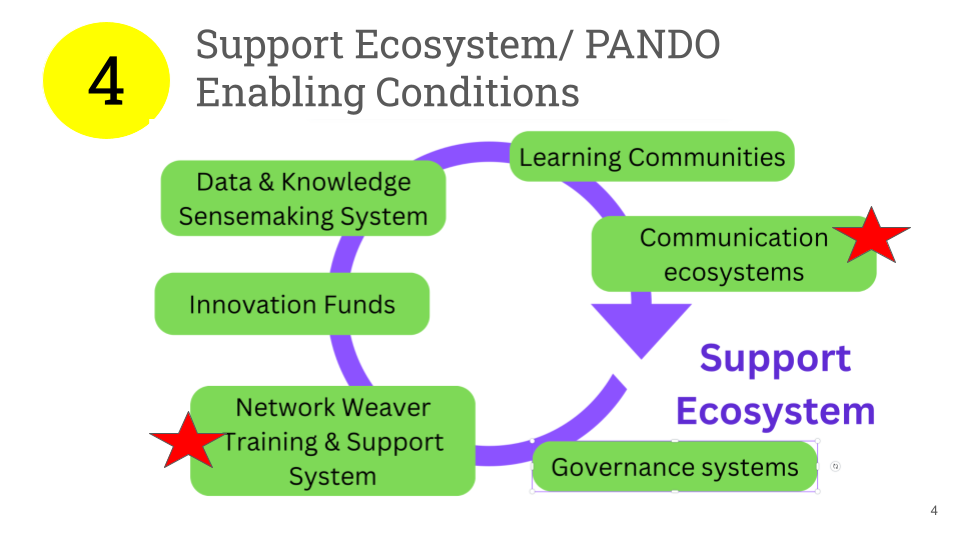This is Part One of our series on network coordination. See also Part Two on building capacity as networks scale and grow.
On February 15th, 2023, Socialroots convened a panel on network engagement with three extraordinary people who have helped us along our path. The event recording below contains a wealth of wisdom from our panelists' experiences.
In this post, we reflect on some core topics and share our insights for refining practices of healthy, skillful coordination.
Signs of network engagement
What does an engaged, mutually-supportive network look and feel like? Here are some key indicators:
- You'll see plenty of excitement or motivation and rapid growth,
- The network communicates a clear sense of shared problems and shared purpose,
- People will be working out loud, supporting a peer-to-peer culture of leadership.
The first two points may seem self-evident. Sensing if there's energy and excitement is a basic human social skill, though it's all too easy to forget 'first principles' when we're under stress. Plenty of resources exist to address the challenge of creating a common agenda for collective impact, a 'minimum common ground' as Aldo De Moor puts it. But we might not naturally sense the third indicator (working out loud). How can we tell if our network is fostering healthy interactions? As network coordinators, we need to learn to listen for silence. We need to model the transparency we wish to cultivate. Beyond this, working out loud requires people to change habits, to take risks, to be willing to share drafts and avoid perfection. This behavior flies in the face of the old adage, 'knowledge is power', and asks for an openness we are not all accustomed to.
But today, learning is power. The capacity to adapt is critical for our time. By cultivating habits of working out loud (through promoting psychological safety and demonstrating vulnerability), we tighten the feedback loops required for rapid learning and adaptation. It also encourages a relational, rather than transactional, approach. It requires us to both step into and cede positions of leadership as our focus changes. It builds flexibility and trust. This 'new' way of networked working is actually very human - as Carol pointed out, we need to learn from ancient wisdom and recognize that building our networks in this way is new only in the sense that it’s different from the current dominant paradigm.

Start by trusting that everybody can lead. Everybody has the ability to see what’s needed at different points in time.
-Carol Xu
Unavoidable Bottlenecks
Why do network coordinators so often end up in a bottleneck position?
- Network and community coordination involves curation. This is a service provided by the most involved, active people to other members.
- Sometimes, especially early on, bottlenecks are useful for that curation, or to slow down in order to make better decisions together.
- BUT bottlenecks are not an individual behavior, they are a systemic structure, and so can be very hard to shift once set up.
We've heard a lot in our research about the position of bottlenecks and the desire to escape that dynamic. But bottlenecks will appear in most if not all networks. We can minimize them, and build around them, but we cannot avoid them entirely. Anytime information asymmetry exists, it will create either power imbalances (if information is hoarded) or bottleneck positions (as we strive to share information) without mature distributed organizing structures in place.
Rather than fight or deny these positions, we need to recognize them as a common structural phase in networks. Then we can move from that hub-and-spoke phase into sharing power. We can do this by encouraging the small group formation which helps shift the flow of information and trust into a more appropriately distributed structure. By paying attention to the systems that emerge from how we work together, we gain the ability to choose better patterns.

We needed to slow things down intentionally sometimes. We were moving at such a pace, with so many people, that the bottleneck was intentionally created to make sure we could make decisions about effectiveness and safety.... Then as we wanted to move faster, as the context changed, we found those bottlenecks got in the way.
-Lauren Hebert
Clearing the way
How can we escape the dangers of bottlenecks?
- Make sure that those in central positions are aware of the bottleneck traps.
- Encourage new voices to reduce establishing invisible bias (we've all got it!).
- Invite people into co-leadership, learning and use double linking whenever you can.
Power is a drug. The bottleneck position comes with headaches and busywork, but it also comes with power. One of the things that emerged in this conversation was the need for awareness, by anyone stepping into leadership, of the traps we can too easily fall into when we hold positions of power. Coordinators must remain aware of the fragility and danger to the existence of the network that condensing power brings. If that stays top of mind, they continually practice giving power to others.
Ways our panel discussed to encourage this habit include double-linking, co-leadership, and patterns of learning and mentoring. Not only do these help with the bottleneck problem, you get faster, better decisions when people work and learn together regularly. When successful, power expands; the network, rather than a single individual, gains the power to thrive. These conditions can create abundance for far more people than otherwise would be available.

Bottlenecking is a system. That means it’s less of an individual issue or failing of humans, and more about how we set up our orientation to the work, how we structure working groups and the way we approach leadership in organizations. Only a system can help fix the system.
-Jay Carmona
Warning signs
What signals or early warning signs hint at disengagement, and what actions can coordinators take to address this?
- People start to lose a sense that they can jump in and contribute meaningfully.
- Look for what's not there - things missing, or things all the same.
- Beware of metrics typically used to measure 'engagement'. They are not sensitive enough to sense the early stages of a disengaged group.
We love (LOVE!) Jay's party analogies. Too often, studying relational dynamics draw us into draws us into densely theoretical or heavy-handed efforts to create connections. Jay reminds us that engagement - or sensing the lack of - is something we humans do very naturally. Whether wallflowers, dancers, DJs, hosts, or cooks, we're all social animals. If we tune into the feeling of a crowd in this most human way, we can listen, feel, smell, and otherwise sense the vibe in the room. Networks change; ebbs and flows are natural. To identify the dangers of disengagement early, look for what's not there. You may see a lack of working out loud, new people not joining or sticking around, people who all look or sound the same, stalled progress or people claiming actions, lack of variety, or even a lack of meaningful conflict.
To convene a healthy network of humans, as with any fun party, hosts need to be - or become - sensitive and kind enough to see, address, and shift things like confusion, sadness, loneliness, fear. Be careful that you aren’t suppressing this valuable feedback. You might proactively create ways to surface these indicators. Tune into, or perhaps even invite 'meaningful conflict'. People who care enough to disagree well can shape something that has purpose. Conveners need to be frank with themselves and their active members when they sense disengagement. They also need to be brave enough to do something about it, or the network will fizzle out. Once people start walking out the door, it's likely too late to do anything to restart the party.
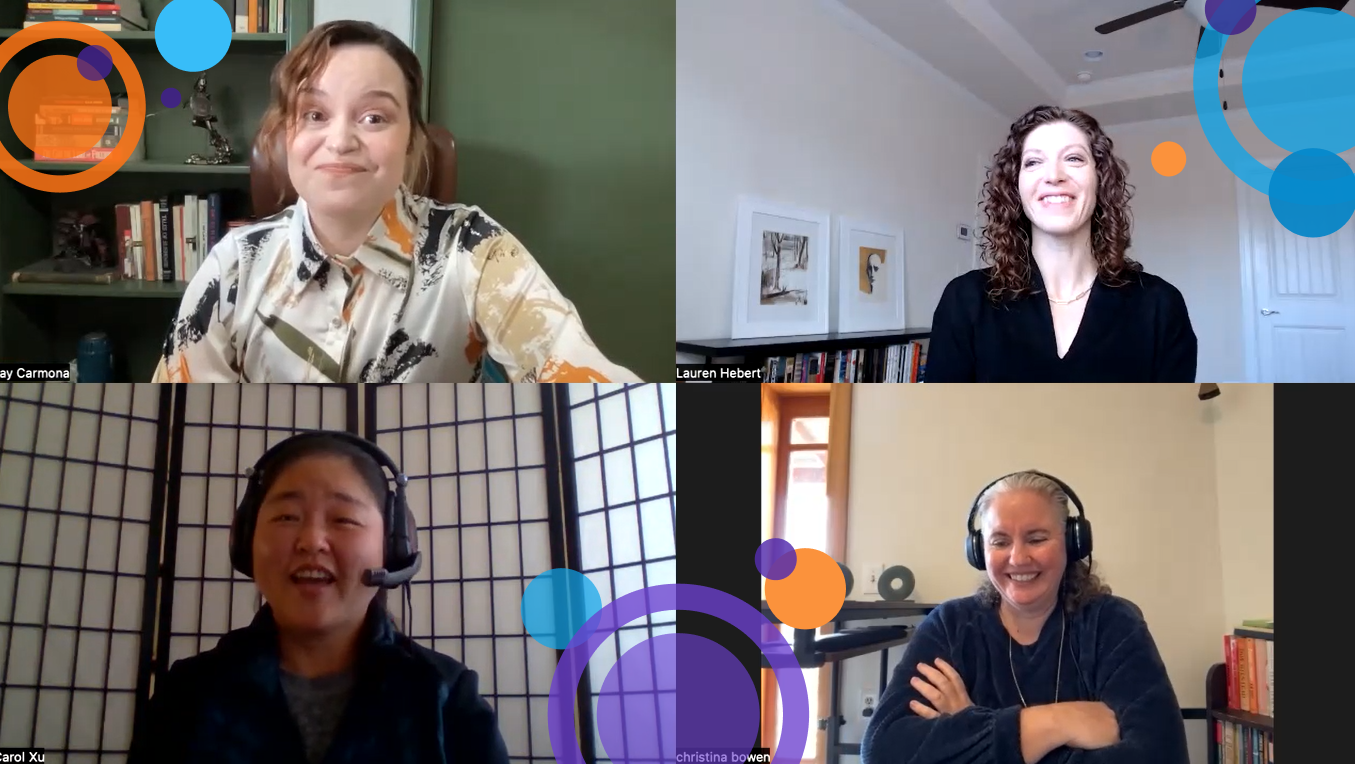
If you’re at a party, what are the signs that people are bored and going to leave? ...If everyone was sitting with a drink and staring back at me - or, if everyone looks the same or acts the same - that's weird right? My hair would stand up because it's not a normal human situation. The same thing applies in digital communities.
-Jay Carmona
Healthy networked leadership
When people co-create a healthy network, what does leadership look like? How can you prevent re-centralizing but lead enough to help the coordination?
- Hierarchical structures have their own merits (nature is full of nested hierarchies) but people in central roles must also be aware of the traps. Centralizing power creates fragility, and unrestrained hierarchies can cause problems analogous to cancer.
- Look for leaders willing to intentionally teach what they do, so that two people can now do that thing. This pairs well with co-leadership.
- Keep power explicit, but realize that healthy networked leadership structures are dynamic. Regularly check in with new members to understanding the experience of getting oriented in a changing environment.
For healthy and effective networks to thrive, co-leadership is key. Too often, when people try to build an equitable network, they want to share power with everyone. This leads to a lack of clarity, even chaos, where nothing gets done. In many networks, even if progress is made, too few people get credit. Work can be invisible; or worse, credit claimed when unearned. Success goes not only to the successful, but those willing to make themselves visible. The power of networks can have a dark underbelly where the conveners or known figures get all the acclaim, whether sought or not.
Sharing power helps avoid these dark patterns. This does not mean a completely flat structure; it can start with partnering with one person. Ask a board member or CEO to mentor someone. Step into partnership with active community members early and often. A model of co-leadership, as described above, can help this happen. As you introduce co-leadership, be sure to pay attention to perspectives from both the core team and the wider community. Do people with power in the network recognize the traps? Do they help each other stay out of ruts and build habits of offering power to others? Do community members have easy ways to give feedback about what's not working well for them? Are they clear how to deepen their involvement? Can they trust that their work will be recognized and valued? When "Yes!" is the answer to these kinds of questions, networks find their tune, and play 'in concert', like an orchestra being guided by the conductor and the sheet music.
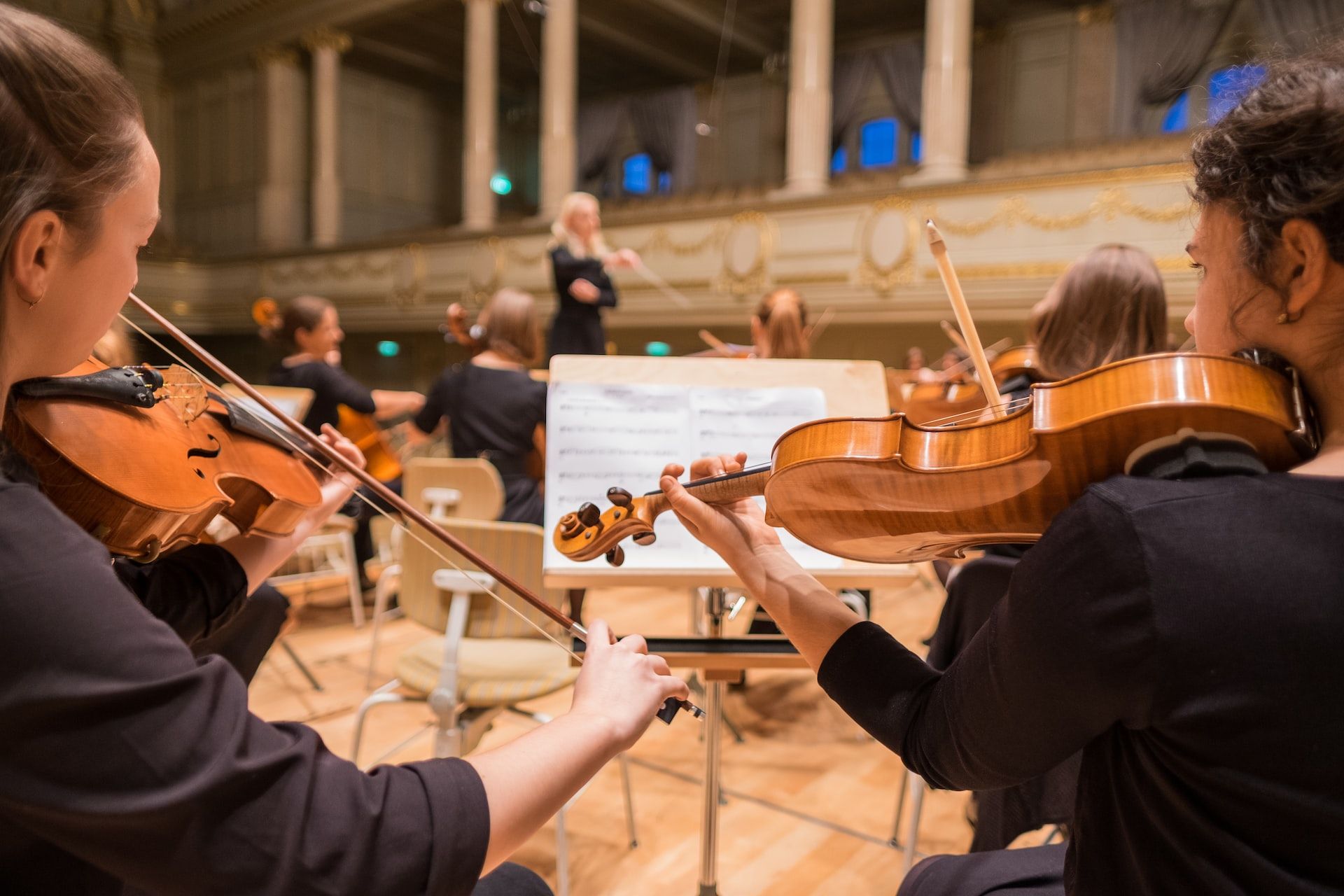
If I’m a leader at the top of a hierarchy or bottleneck...[I need to notice if] for example, people stop talking to me, or people are afraid of bringing up real tensions. [If so], my power and habits are getting in the way. In some ways, the end result [of paying attention to those dynamics] is decentralizing power or making it explicit.
-Carol Xu
Want to apply or suggest a network for early access to Socialroots? Purpose-built for networked organizations, we help coordinators reduce bottlenecks, de-silo, and more easily show the impact of their networks to stakeholders.
Network discovery
Shout outs to a few of our friends in attendance
During this event we were glad to see a few folks arrive whose work has informed what we are building at Socialroots. We'll add some links here so their brilliance becomes familiar to you, too!
Aldo De Moor of Community Sense was one of the first people we asked to join us as an advisor member of our cooperative. Expert in community informatics, Aldo introduced the CommunitySensor methodology that takes a cyclical approach to Participatory Community Mapping. He's worked with communities from Africa to British Columbia. You can find his rich research publications here.
Ana Rosa de Lima is one of the most inspiring network coordinators we've met. She's catalyzing a network using bees and the rain forest to help preserve and regenerate each other, all while helping humans find balance in the Amazonian ecosystems. Want to find out more? See the Meli Bees Network, and even get nerdy reading "Do you know about the diversity of bees?".
Daniel Stid, previously at the Hewlett Foundation and steward of the amazing Madison Initiative System Map of Congress. Daniel is currently the executive director of Lyceum Labs, and has some very useful questions for all network weavers to consider in his recent blog post, Non-profit Physician, Heal Thyself!
Event Details
VIDEO: Engagement Clears the Way
(1 hr 7 min)
What makes vibrant networks come alive?
Is your community new, stalled in progress, or struggling with engagement? Is your capacity feeling stretched? Would you like some ideas for encouraging your members to better support each other, and strengthen the network as a whole?
Listen in to a conversation with the founder of pandemic pop-up Make4Covid, Lauren Hebert, community experience designer Carol Xu, and Jay Carmona, labor and activist movements maven. Knowledge ecologist Christina Bowen of Socialroots explores these and other questions of community engagement with the panel.
The first part of a series on network coordination, this panel explores how to ENGAGE your network. Keep in the loop for events focusing on ways to BUILD and GROUND healthy networks: sign up for our newsletter here.
About the panelists

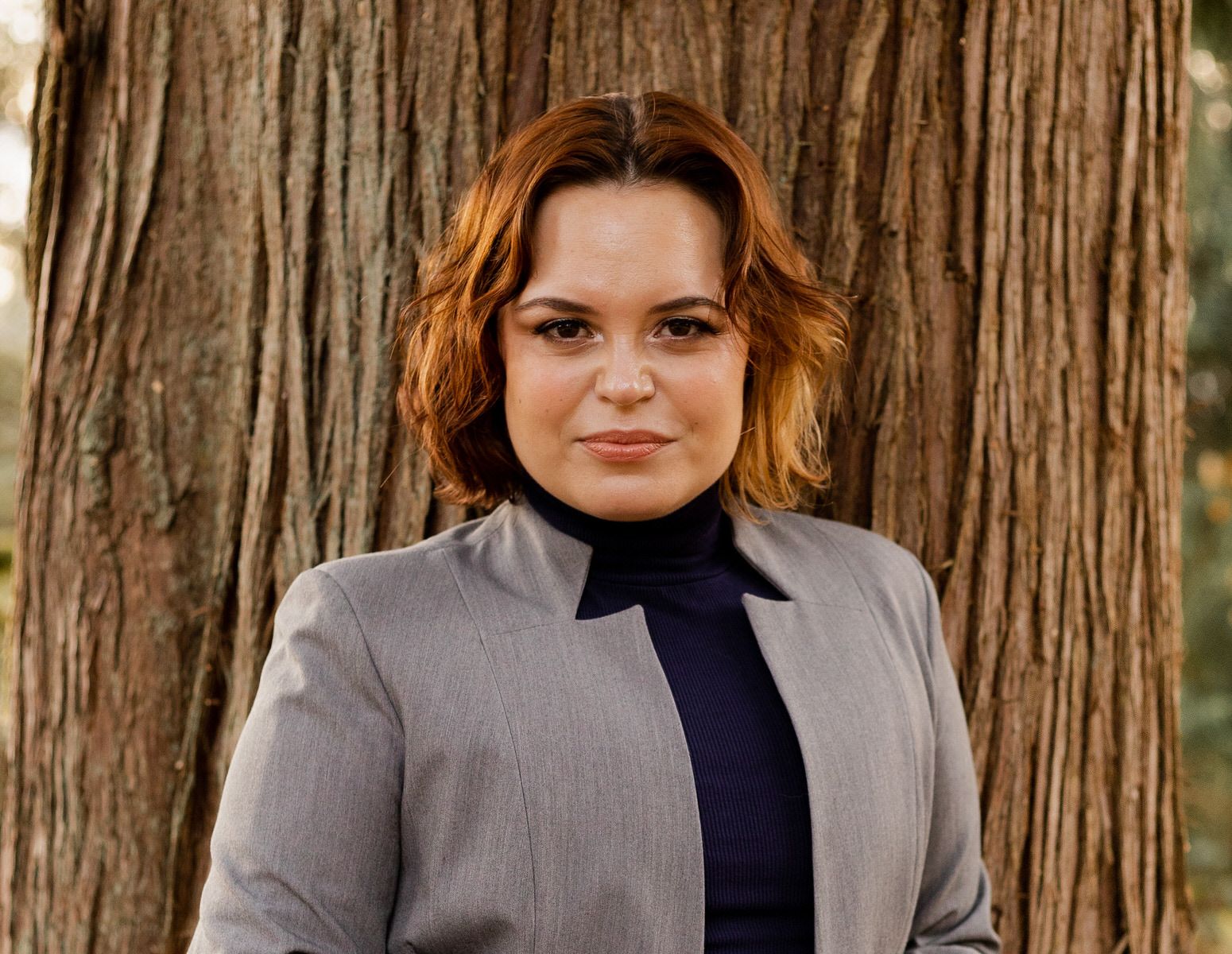
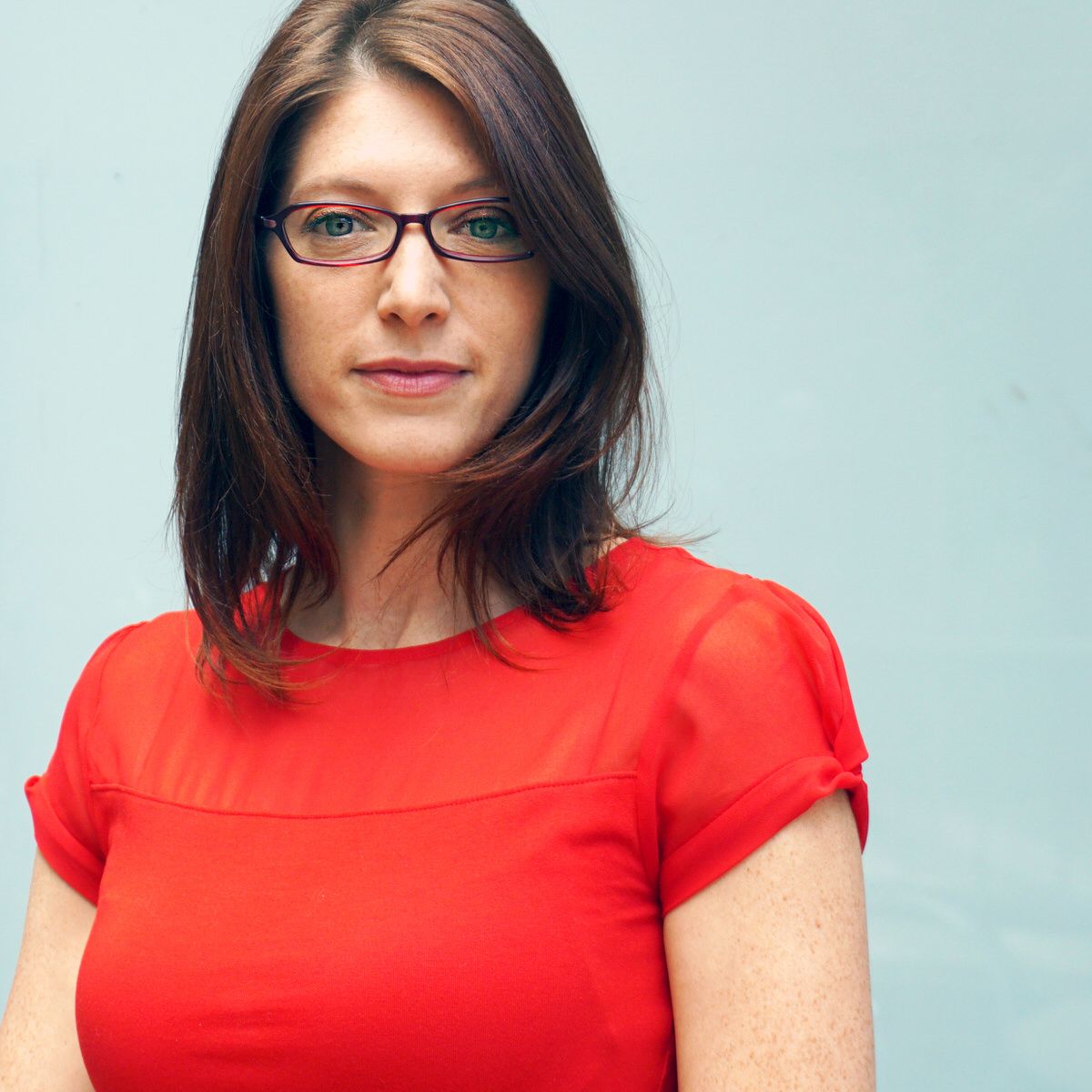
Pictured from left to right: Jia (Carol) Xu, Ph.D, Jay Carmona, and Lauren Hebert
Jia (Carol) Xu, Ph.D, a former researcher of management science, has always been fascinated with new ways of organizing people and resources (such as self-organizing, Decentralized Autonomous Organization, sociocracy, Deliberately Developmental Organization) that empower creativity, resilience, and transparency. Carol designs and hosts social spaces and innovative "sandboxes" that integrate contemplative, creative, and strategic elements into learning for organizational leaders, community stewards, and purpose-driven individuals. Carol holds a Ph.D. in Management Science and Engineering from Stanford University. She loves going on (in-person, virtual or metaphorical) hikes with people from all walks of life.
Jay Carmona has worked on dozens of campaigns since 2008 in a career spanning multiple arenas of the American Left, including labor organizing, environmental justice, LGBT civil rights, faith-based work, and media justice. Before helping to roll out the world’s first campaigns to divest public pension funds from fossil fuels at 350.org, they were instrumental in coordinating major mobilizations in Washington DC. They’ve worked for two City Governments and on the Stop Rush campaign while working at Media Matters for America. Jay specializes in bringing together unlikely partners with a holistic approach to campaigning that includes a seamless blend of both online and offline grassroots organizing.
At the recently-founded consultancy, Sematonic Strategies, Jay supports creating decentralized, tech-supported community organizing networks and mediagenic online campaigns.
Lauren Hebert is a strategist, designer, and facilitator with an integrated understanding of complex adaptive systems, design thinking, sense-making, and human development.
Over the past eight years, Lauren has been designing and leading sense-making processes that activate meaningful collaboration. She has worked with organizations across the spectrum—from startups to cities—as they address systemic challenges with functional, holistic solutions.
Among her many roles, Lauren was a lead organizer of Make4Covid, a Colorado based crisis response organization that grew to over 2000 members in just a few weeks and provided free PPE to medical professional across the state.


